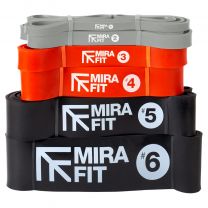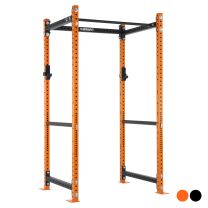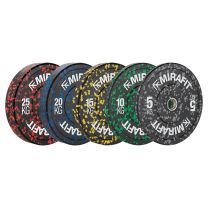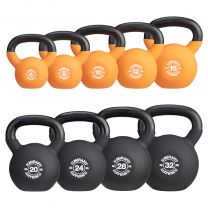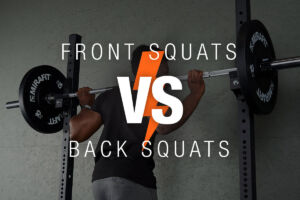Spanish Squats
Spanish Squats

Back squats, front squats, goblet squats. The list of different squat versions is long, but do you have Spanish Squats on the list? If not, you are missing out on some fantastic training benefits!
What Are Spanish Squats?
So, what are Spanish Squats and why should they be part of your routine? This version of squats involves a Resistance Band being looped around a central anchor such as on a power rack and the open loops around the back of each leg. The band now pulls back on your legs allowing you to adjust your centre of gravity further back. Now, when you squat you are able to sit further back into the squat in a similar position to a wall squat.
What Are the Benefits of Spanish Squats?

Firstly, the movement of sitting back in the squat with your centre of gravity further away from your knee requires greater quad activation. This quad activation is further increased towards the top of the squat as you need to push back into the band to complete the squat. Both of these requirements cause the quad muscles to work harder than with normal squats. This is particularly useful if you want to build quad muscles or if your quads are the weak link in your legs and you want to place more load on them.
In addition to placing more load on the quads during training, Spanish Squats are also useful in the rehab world. So often you hear trainers saying that if your knee is sore that you shouldn’t train. With knowledge however, you are able to train around the pain.
Not only is this theory good to keep you training but may help you recover from the pain faster. With the bands around the knees supporting you during the squat, your tibia remains more vertical as opposed to it angling forward as it does in a normal squat where the centre of gravity moves closer to the knees. By keeping the tibia more vertical, the tendons around the knee joint don’t stretch as much and therefore you experience less strain around the knees. So, if normal squats are causing you discomfort, give the Spanish Squats a go.
How to Spanish Squats Compare?
Spanish squats are not the only squat versions that require greater quad activation by moving the centre of gravity further away from the knees. Good examples of this include the wall squat and the sissy squat.
Spanish Squat vs Wall Squat

Wall squats are static holds against the wall with your hips and knees both forming a 90 degree angle. A wall squat makes it easy to see how much further back the load, which is in the form of the upper body, is from the knee. In the case of the wall squat it is as far back as the load can be. With this set up, the load will be at its furthest point on the lever which requires greater force around the knee. If you were to add an additional weight to the exercise in the form of Dumbbells, the strain on the knees can become excessive and result in injury.
In addition to this, a recent study (Lee et al, 2022) has shown that there is greater quad activation in the Spanish squat as opposed to the wall squat so if strengthening quads or reducing strain on the knee is your goal then Spanish squats would be a better choice.
Spanish Squat vs Sissy Squat
Sissy squats were popularised during the golden age of Arnold Schwarzenegger. They involve having your feet anchored to the floor and padding to keep your tibia vertical as you sit back into the squat. While these two squats look very similar there is a slight difference.
The Spanish squat use resistance bands that pull on the back of the calves while the Sissy squat bench pulls on the anterior tibialis. This small difference results in the anterior tibialis tightening which compresses the knee more than the Spanish squat does, making the Spanish squat a better choice if knee strain is a concern.
How To Do a Spanish Squat

Start by wrapping a resistance band around an immovable object such as a power rack. Then stand with one leg in each of the loops of the resistance band. Move the band up so that it is just behind your knee. Slowly move backwards so that the band provides a bit of resistance against your leg. Hold a Bumper Plate to your chest and slowly sit backwards, allowing the band to act as a counterweight for your squat. Your torso should be in an upright position and try to keep your tibia as vertical as possible. Once your quads are parallel to the floor, drive back up by contracting the quads. At the top of the movement push your legs back into the band.
Spanish squats are the perfect squat variation to blast your quads during leg day. They also provide a method to keep squatting around any knee pain that you might be experiencing. Spanish squats don’t require much equipment. Just make sure that you are able to anchor the resistance band to a solid structure. For an added quad workout, you can also increase the resistance of the resistance band or increase the weight of the bumper plate. Your quads will never feel left out of leg day again.
Want to have a go at a different type of squat? Check out our guide to front squat benefits.
Written by guest author Brendan McBirnie.
For more content, follow us on Instagram, YouTube, TikTok, and on our official Mirafit Facebook page.
Enter your email to signup to our newsletter
Tags: Equipment > Resistance Bands ; Exercise Type > Conditioning

